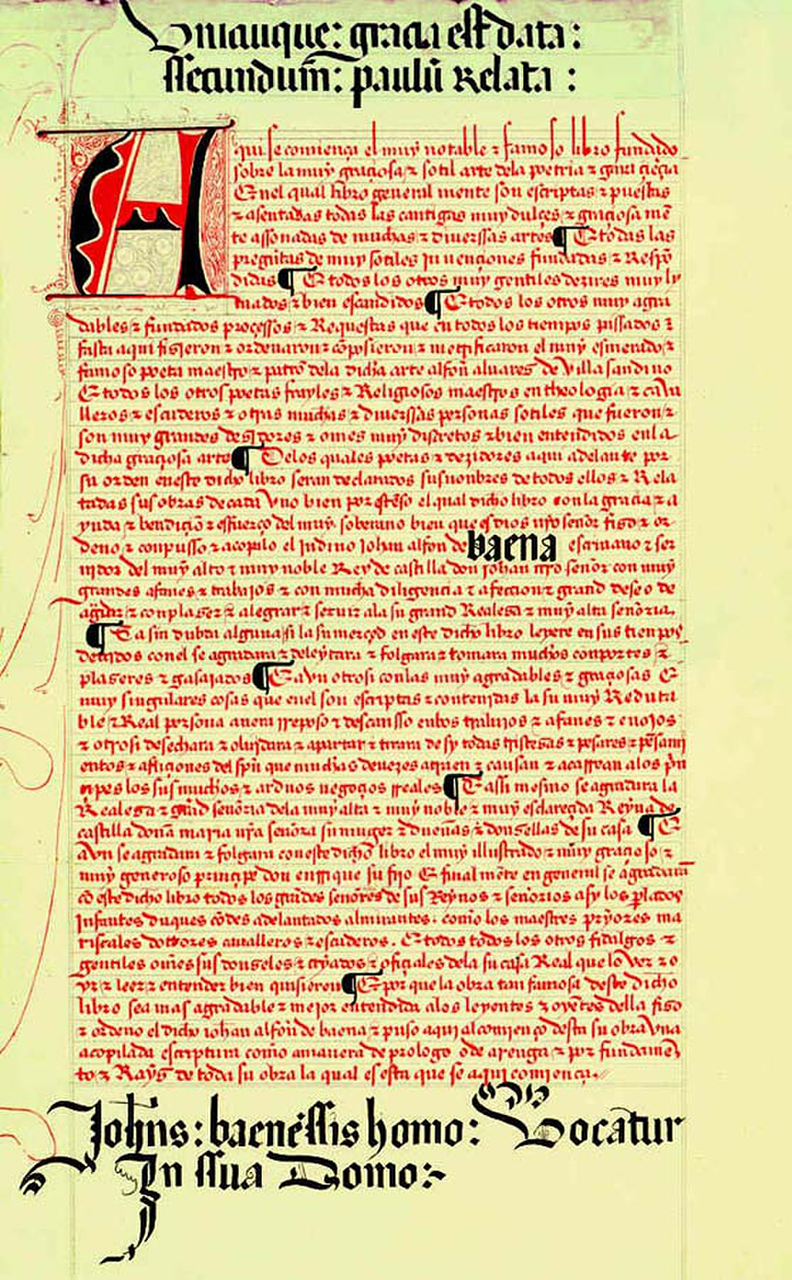Writers, painters, politicians, military, religious or sculptors
THE NOURISHED GROUP OF BAENENSES THAT MADE HISTORY
Throughout history, numerous people born in the town have had special recognition for their merits in the different fields of politics, religion, literature or art.
The first testimonies of Baenenses who achieved notoriety are from the Muslim period
Quasim ben Asbag , known as Al-Bayyani (the Baenense), was an important historian and geographer of Al-Andalus, born in the town on November 2, 861.
Juan Alfonso de Baena was born in the town that bears his last name. We know, from his own words, that he was educated in the town of Baena.
Juan de Peñalosa y Sandoval was born in Baena in 1579, moving to Córdoba later to enter Pablo de Céspedes’ workshop, where he would become one of his most brilliant disciples.
The poet Luis Carrillo de Sotomayor was born in Baena in 1586. In verse he wrote 50 sonnets, twenty romances, letrillas, estancias, lyres, two fishermen’s eclogues, eighteen songs and “Fable of Acis and Galatea”, which would serve as inspiration for Góngora in his Polyphemus.
Miguel de Colodrero y Villalobos was a prolific author of the poetic orbit of culteranismo who was related to the best poets of the moment: Lope de Vega, Montalbán, Soto de Rojas. At the age of 21 he published his first volume of verses “Varias rhymes”.
Joaquín del Pino y Rozas was born in 1727, entering the Military Academy of Engineers at a very young age. In 1771 he went to the Río de la Plata, where he would occupy various important positions, reaching the position of viceroy of the Río de la Plata in 1801.
José Amador de los Ríos was born on January 1, 1816 and was a notable polygrapher and essayist. He is a member of the Royal Academy of History and secretary of the Central Commission of Monuments. He contributed to the creation of Secondary Education institutes in the provinces and to the promotion of schools and academies of Fine Arts. Between His works include “Historical, political and literary studies on the Jews in Spain” ; “Latin-Byzantine art in Spain”, “Discourse on Mudejar art and style”, “History of the Villa and Court of Madrid”, among others.
As a literary critic, his seven volumes of the “Critical History of Spanish Literature” stand out.
Demetrio de los Ríos , brother of José Amador de los Ríos, was an architect, archaeologist and poet born in the town in 1827. Settled in Seville, he founded the city’s Archaeological Museum and saved twenty-five churches from the revolutionary pickaxe, almost all Mudejar , also avoiding the demolition of the Torre del Oro and the Plateresque part of the Town Hall.
The importance of his work is centered not only on his famous performance in the restoration of the cathedral of León, which marked a milestone in this matter, but also on many other important performances such as the ruins of Itálica.
Santo Domingo Henares , was born on December 19, 1766 and professed at the age of 18 as a Dominican friar, leaving soon after for the Missions of Asia. In Tonkin (north of present-day Vietnam) he exercised his ministry until he was imprisoned and beheaded on June 25, 1838. He was declared Blessed in 1900 and canonized by John Paul II on June 19, 1988.
Francisco Valverde y Perales was a soldier, writer and historian born in Baena in 1848. After entering the army at a very young age, he would be assigned to the island of Cuba, where he went on to serve in the Civil Guard. His actions were rewarded with distinctions and promotions to the rank of captain.
Back in Spain, he was assigned to the command of Toledo and in 1902 he retired with the rank of commander. From there, he gave free rein to his hobbies as a poet, archaeologist and historian.
He wrote “Leyendas y tradiciones de Toledo, Córdoba y Granada”, “Heridas de la honra” and works of archaeological and historical research such as “Roman Antiquities of Andalusia”, “History of the town of Baena” and “Antiguas bylaws of the town of Baena”. He belonged to the Royal Academies of Córdoba, of History and of San Fernando
Diego de Monroy was a famous painter born in 1790, a member of the Royal Academy of San Fernando and awarded the Flor de Lis of France. He worked as a Chamber painter in Madrid and after returning to Córdoba he took charge of the organization of the Museum of Fine Arts.


